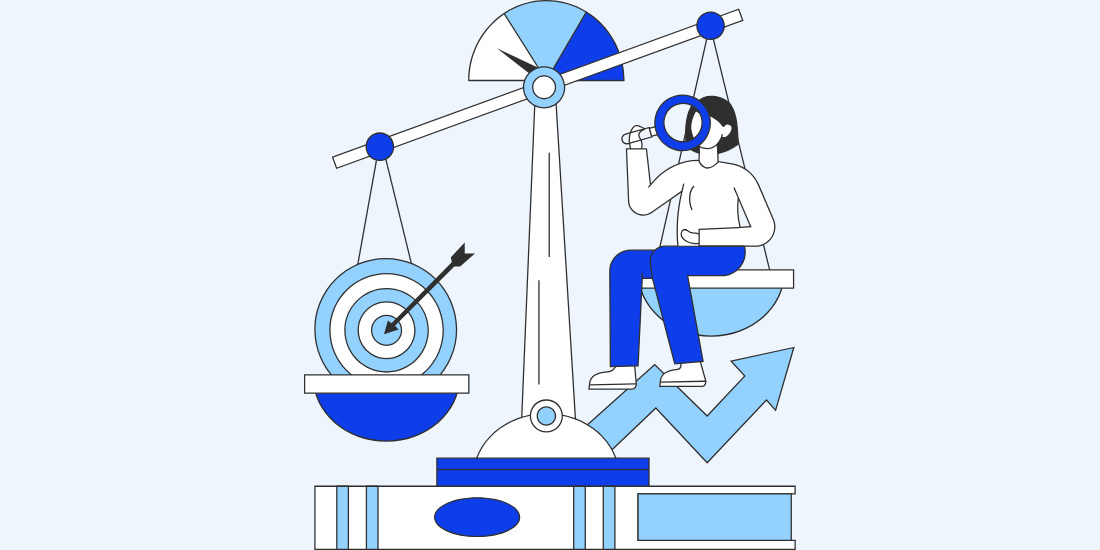AI's Secret Sauce: How Machines Get Smart
The fascinating process behind teaching AI to think like us.
How Machines Get Smart
What’s up everyone!
Have you ever wondered how artificial intelligence actually learns? It may seem like magic, but it is not — it’s a mix of data, algorithms, and clever design. In this article, we’ll go over how machines turn raw information into intelligent behavior like recognizing faces, chatting like a human, or playing chess at a grandmaster level.
What’s Inside …
How AI Learns
Types of AI Learning
Supervised Learning: Learning with labeled data.
Unsupervised Learning: Finding patterns in unlabeled data.
Semi-Supervised Learning: Mixing labeled and unlabeled data.
Reinforcement Learning: Learning through rewards and penalties.
Self-Learning: Learning independently from interactions.
Transfer Learning: Adapting knowledge to new tasks.
Deep Learning: Layered learning with neural networks.
Ethical Considerations
It’s All About the Data
The Role of Algorithms
The Future of AI Learning
How AI Learns
Artificial intelligence (AI) is rapidly transforming our world. From self-driving cars to medical diagnoses, AI is already having a profound impact on our lives. But how do these intelligent systems actually learn?
Similar to how humans acquire knowledge, AI systems learn through the analysis of data, experimentation, and continuous refinement of their models. This process is often compared to the human learning process, particularly with the concept of neural networks. These networks mimic the structure of the human brain, with interconnected nodes processing and passing information between each other.
By adjusting the strength of connections between these nodes, the network learns to recognize complex patterns within data, make predictions, and even learn from mistakes. This makes neural networks useful for a wide range of applications, such as recognizing images, understanding human speech, and translating languages.
AI systems also learn in an iterative manner. They combine large datasets with intelligent processing algorithms to learn from patterns and features in the data. Each time an AI system runs a round of data processing, it tests and measures its own performance, developing additional expertise. This continuous learning process allows AI systems to become incredibly capable at the tasks they are trained to accomplish.
Types of AI Learning
There are several different types of AI learning, each with its own unique characteristics and applications. Some of the most common types include:
Supervised Learning
Learning with labeled data.
Supervised learning is a type of machine learning where an AI model is trained on a labeled dataset. The AI system is given a set of inputs with corresponding outputs, and it learns to map the inputs to the outputs. For example, an AI system could be trained on medical images labeled with diagnoses. The system would learn to identify patterns in the images to predict diagnoses for new, unseen images. Supervised learning is commonly used in applications such as image recognition, spam detection, and medical diagnosis.
Unsupervised Learning
Finding patterns in unlabeled data.
Unsupervised learning is a type of machine learning where the AI learns without labels, more like how a child might naturally group similar toys together. The system looks for patterns and structures in data on its own. For example, an AI system could be used to analyze customer purchase history to identify groups of customers with similar buying behaviors. This information can then be used for targeted marketing campaigns. Unsupervised learning is commonly used in applications such as customer segmentation, anomaly detection, and recommendation systems.
Semi-Supervised Learning
Mixing labeled and unlabeled data.
Semi-supervised learning combines elements of both supervised and unsupervised learning. It uses a small amount of labeled data along with a larger amount of unlabeled data to train AI models. This approach can be particularly useful when obtaining labeled data is expensive or time-consuming. For example, semi-supervised learning can be used to improve the accuracy of image recognition systems when only a limited number of labeled images are available.
Reinforcement Learning
Learning through rewards and penalties.
Reinforcement learning is a distinct type of machine learning where an AI agent learns by trial and error in an interactive environment. While it shares some aspects with supervised and unsupervised learning, it primarily focuses on learning through interactions and feedback. The AI agent receives rewards or penalties for its actions, and it learns to take actions that maximize its rewards. For example, an AI agent could be trained to control a robot in a warehouse. The agent would receive rewards for successfully navigating the warehouse and completing tasks, and penalties for collisions or inefficiencies. Reinforcement learning is commonly used in applications such as robotics, game playing, and control systems.
Self-Learning
Learning independently from interactions.
Self-learning AI systems represent a fascinating advancement in AI. These systems can acquire and renew knowledge independently over time, without the need for explicit programming or labeled data. They operate by interacting with their environment, observing the consequences of their actions, and adapting their behavior accordingly. This type of learning is often inspired by the human brain's ability to learn from experience. Self-learning AI systems are finding applications in various fields, including gaming, finance, and autonomous vehicles.
Transfer Learning
Adapting knowledge to new tasks.
This is like building on previous knowledge. Instead of learning everything from scratch, the AI can take what it learned from one task and apply it to a new, related task. It's similar to how knowing how to ride a bicycle might help you learn to ride a motorcycle faster.
Deep Learning
Layered learning with neural networks.
Deep Learning is a sophisticated approach that uses artificial neural networks inspired by how our brains work. The AI processes information through multiple layers, each picking up increasingly complex patterns. This powers many modern AI achievements, from language models to self-driving cars.
Ethical Considerations
As AI systems become more integrated into our lives, it is crucial to consider the ethical implications of their use. AI systems can be used for both beneficial and harmful purposes, and ensuring responsible development and deployment is essential.
Some of the ethical considerations of AI learning include:
Bias: AI systems can inherit biases present in the data they are trained on. This can lead to unfair or discriminatory outcomes, such as facial recognition systems that are less accurate for certain demographic groups. To mitigate bias, it's crucial to use diverse and representative datasets and to carefully evaluate AI systems for potential biases.
Privacy: AI systems often collect and process large amounts of personal data. Protecting user privacy is paramount. This involves implementing strong data security measures, being transparent about data collection practices, and giving users control over their data.
Transparency: Understanding how AI systems work and make decisions is essential for building trust and accountability. Explainable AI (XAI) is an emerging field that focuses on making AI decision-making processes more transparent and understandable to humans.
Accountability: It's important to establish clear lines of responsibility for the decisions made by AI systems. This includes determining who is responsible for AI system errors or unintended consequences.
It’s All About the Data
Data is the foundation of AI learning. AI systems learn by analyzing and identifying patterns in data. The quality, quantity, and diversity of data directly influence the effectiveness of AI solutions. High-quality data enables AI systems to make more accurate predictions and decisions, while poor-quality data can lead to erroneous outcomes.
AI systems require large amounts of data to learn effectively. The more data an AI system is trained on, the more accurate and sophisticated its models become. For example, an AI system trained to translate languages will be more accurate and fluent if it is trained on a massive dataset of text and speech.
The diversity of data is also crucial for building unbiased AI systems. AI models trained on non-representative data can perpetuate and amplify biases, leading to unfair or unethical decisions. For example, an AI system trained on a dataset of images that only includes people of a certain race may be biased against people of other races.
AI systems utilize various types of data, including:
Image data: Captured through cameras or imaging devices, image data is used in computer vision tasks such as object recognition, image classification, and medical image analysis.
Audio data: Captured through microphones, audio data is used for speech recognition, speaker identification, and music analysis.
Sensory data: Collected from physical sensors, sensory data is used in applications such as robotics, autonomous vehicles, and environmental monitoring.
The Role of Algorithms
Algorithms are the engines that drive AI learning. They are the sets of rules and calculations that allow AI systems to learn from data. Different algorithms are used for different types of AI learning. For example, supervised learning algorithms are used to train AI systems on labeled data, while unsupervised learning algorithms are used to train AI systems on unlabeled data.
Some commonly used algorithms in AI include:
The Future of AI Learning
The future of AI learning is brimming with potential. As AI systems become more sophisticated, they will be able to learn more effectively and solve increasingly complex problems. This will have a transformative impact on various aspects of our lives, from healthcare and education to finance and transportation.
Some of the potential future applications of AI learning include:
Personalized medicine: AI systems could be used to develop personalized treatment plans for patients based on their individual needs and genetic makeup. This could lead to more effective treatments and better patient outcomes.
Education: AI systems could be used to create personalized learning experiences for students, adapting to their individual learning styles and pace. This could revolutionize education by making it more engaging and effective for all students.
Finance: AI algorithms are already being used in finance for tasks such as fraud detection and risk assessment. In the future, AI could play an even greater role in areas like investment management and financial forecasting.
Transportation: AI is a key technology driving the development of self-driving cars. As AI systems continue to advance, we can expect to see even more sophisticated autonomous vehicles that are safer and more efficient.
Healthcare: AI is poised to revolutionize healthcare by improving diagnoses, personalizing treatment plans, and monitoring patients remotely. AI-powered tools can help doctors make more accurate diagnoses, predict patient outcomes, and develop more effective treatment strategies.
Education: AI can transform education by enabling personalized learning experiences, automating administrative tasks, and providing valuable insights into student performance. This can lead to more engaging and effective learning environments for students of all abilities.
Systems and Control Engineering: AI and machine learning are driving optimization in various engineering fields. AI algorithms can analyze vast amounts of data in real-time to improve the efficiency and accuracy of systems, such as those used in manufacturing and transportation.
Conclusion
AI learning is a rapidly evolving field with the potential to reshape our world. By understanding how AI systems learn, we can better harness their capabilities and address the ethical considerations that arise. The different types of AI learning, the crucial role of data and algorithms, and the ongoing advancements in AI research all contribute to the future of this technology.
Take your AI education further with these posts…
Have a great day!
























